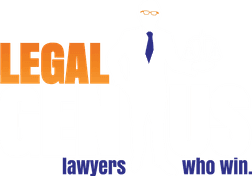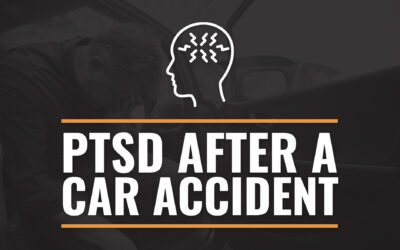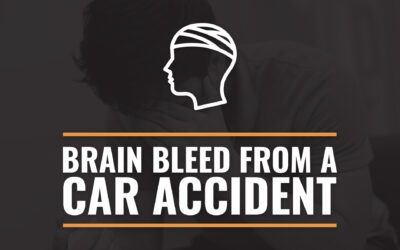
Table of Contents
Each year, over 10,000 children in the U.S. are born with cerebral palsy, a condition characterized by neurological damage to the motor cortex. These children suffer profound and often permanent physical impairment while their worried parents struggle to provide them with the personal and medical care they need.
In some cases, cerebral palsy may result from negligence on the part of doctors, nurses, and other medical professionals attending the birth. At LegalGenius, PLLC, we have a long and established record of identifying medical negligence and obtaining settlements and judgments on the infant’s behalf. If your child is affected by cerebral palsy that may have resulted from medical malpractice, contact us today to learn more.
Cerebral Palsy Explained
Cerebral palsy is a group of disorders that affect a person’s ability to move and maintain balance and posture. It results from damage to the developing brain, usually before or during birth. There are four types of cerebral palsy recognized by the medical community, each with its own characteristics.
Spastic Cerebral Palsy
This is the most common type of cerebral palsy. It primarily affects the muscles, making them either too tight or difficult to control. People with spastic cerebral palsy may have stiff or jerky movements and may struggle with basic activities like walking or grasping objects. The muscle tightness can range from mild to severe and often impacts the limbs.
Dyskinetic Cerebral Palsy
Dyskinetic cerebral palsy is characterized by slow, uncontrollable movements of the hands, feet, arms, or legs. People with this type of cerebral palsy may have trouble sitting or walking but usually do not have intellectual problems. The movements are often unpredictable and can make daily tasks challenging.
Ataxic Cerebral Palsy
Ataxic cerebral palsy affects balance and depth perception. Individuals with this form of the disorder walk in an unsteady manner and find it hard to perform quick or precise movements. Tasks such as writing, buttoning a shirt, or reaching for objects can be particularly difficult due to issues with coordination and stability.
Mixed Cerebral Palsy
Some people experience symptoms from more than one type of cerebral palsy, known as mixed cerebral palsy. For instance, a person might have both spastic and dyskinetic symptoms, making their condition more complex to manage. The combination of symptoms can vary widely, depending on the areas of the brain affected.
Early Signs of Cerebral Palsy in Babies
Recognizing the early signs of cerebral palsy in babies can help parents seek timely medical intervention, which is vital for managing the condition. Below is an overview of common indicators to watch for.
Motor Skill Development Delays
One of the earliest signs of cerebral palsy is a delay in reaching motor skill milestones. Babies with cerebral palsy may roll over, sit, crawl, or walk later than other children their age. For example, if your baby isn’t rolling over by six months, sitting without support by nine months, or walking by 18 months, it may be worth discussing these concerns with a pediatrician.
Abnormal Muscle Tone
Cerebral palsy often affects muscle tone, making a baby’s muscles either too stiff (hypertonia) or too floppy (hypotonia). You might notice that your baby has difficulty holding their head up, shows unusual posture, or seems unusually rigid or floppy when you pick them up. These signs can indicate issues with muscle control that are typical in cerebral palsy.
Favoring One Side of the Body
Babies with cerebral palsy might favor one side of their body over the other. For instance, they might consistently reach for toys with only one hand or drag one leg while crawling. This asymmetry in movement can be a red flag and should be evaluated by a healthcare professional.
Unusual Reflexes
Persistent primitive reflexes or exaggerated reflex responses can also be signs of cerebral palsy. Primitive reflexes, such as the Moro (startle) reflex, should disappear by a certain age as the baby’s nervous system matures. If these reflexes persist or if your baby shows overly strong reflex reactions, it could indicate an underlying issue.
Feeding and Swallowing Difficulties
Feeding challenges are another common sign. Babies with cerebral palsy might have trouble sucking, chewing, or swallowing. They may drool excessively or take a long time to finish a feeding. These difficulties can lead to poor weight gain and nutrition problems.
Comparing your baby’s development to typical milestones can be helpful in identifying potential issues. For example, while most babies start to sit without support around six months and walk by their first birthday, those with cerebral palsy may struggle with these skills or achieve them much later. Keeping track of your baby’s progress and discussing any concerns with a healthcare provider can help ensure early intervention if needed.
How Can Medical Malpractice Cause Cerebral Palsy?
Cerebral palsy can sometimes be the result of medical malpractice during pregnancy, labor, or delivery. Here are some ways in which provider negligence can cause cerebral palsy.
Lack of Oxygen (Hypoxia)
One of the most common causes of cerebral palsy related to medical malpractice is a lack of oxygen to the baby’s brain during birth. This can happen if the medical team fails to recognize and address signs of fetal distress, such as an abnormal heart rate. Prolonged periods without sufficient oxygen can cause significant brain damage, leading to cerebral palsy.
Birth Trauma
Improper use of medical instruments, such as forceps or vacuum extractors, can cause physical injury to the baby’s head and brain. Rough handling or excessive force during delivery can also result in trauma that damages the brain, increasing the risk of cerebral palsy.
Untreated Infections
Infections in the mother during pregnancy, such as rubella or cytomegalovirus, can affect the baby’s brain development. If these infections are not properly diagnosed and treated by healthcare providers, they can lead to cerebral palsy. Untreated infections in the newborn, such as meningitis, can also cause brain damage.
Failure to Perform a Timely C-Section
In some cases, a cesarean section (C-section) is necessary to deliver the baby safely. If a healthcare provider fails to perform a timely C-section in situations like prolonged labor, fetal distress, or umbilical cord issues, the baby may suffer from oxygen deprivation or other complications that can lead to cerebral palsy.
Medication Errors
Incorrect administration of medication to the mother during pregnancy or labor can adversely affect the baby’s health. For example, using the wrong dosage or type of medication can lead to complications that may result in brain damage and cerebral palsy.
Inadequate Monitoring
Proper monitoring of both the mother and baby during pregnancy and labor is crucial. Failure to monitor vital signs, fetal heart rate, and other indicators can prevent healthcare providers from identifying and addressing potential problems. This lack of monitoring can result in conditions that cause cerebral palsy.
Understanding these potential causes helps in recognizing the importance of proper medical care during pregnancy and delivery. If you suspect that medical malpractice may have contributed to your child’s cerebral palsy, LegalGenius, PLLC, can help you understand your rights and options.
Compensation When Cerebral Palsy is a Birth Injury
When cerebral palsy results from medical negligence, financial compensation can help cover the various costs associated with caring for the child. This support can ease the financial burden on families and ensure the child receives the necessary care and resources as they grow.
Medical Expenses
This includes costs for surgeries to address physical deformities or improve mobility, prescription medications for managing symptoms, such as muscle relaxants or pain relief, and regular physical therapy sessions to improve strength, flexibility, and mobility. It can also cover medical visits, including regular check-ups and consultations with specialists such as neurologists, orthopedists, and pediatricians.
Rehabilitation Costs
Rehabilitation is essential for improving a child’s quality of life. Compensation can cover various therapies such as physical therapy, which includes exercises and treatments designed to enhance physical capabilities, occupational therapy to help the child perform daily activities independently, and speech therapy sessions to address speech and communication difficulties.
Assistive Devices
Assistive devices improve both mobility and communication. Compensation can help pay for custom-fitted wheelchairs that meet the child’s specific needs, communication devices such as speech-generating tools to aid in communication, and orthotic devices like braces or splints to support the limbs and improve movement.
Home Modifications
Providing compensation for necessary home modifications can help create a safe and accessible environment. This includes installing ramps to make the home wheelchair-accessible, modifying bathrooms with handrails, wider doors, and accessible showers or bathtubs, and adjusting doorways to accommodate wheelchairs or other mobility devices.
Pain and Suffering
Families may receive compensation for the emotional and psychological impact of the birth injury. This includes compensation for the stress, anxiety, and emotional pain experienced by the family, as well as funds for the diminished quality of life and the inability to engage in normal activities.
Lost Wages
Caring for a child with cerebral palsy often requires parents to take time off work. Compensation can cover lost income due to taking time off to attend medical appointments, therapy sessions, or to provide day-to-day care. It can also cover reduced earning capacity if there is any long-term impact on the parent’s ability to work and earn a living.
Compensation provides essential financial support to affected families. If you believe your child’s cerebral palsy was caused by a birth injury, LegalGenius, PLLC, can provide the legal support and representation needed to pursue compensation. Contact us today to discuss your case and learn more about your options.
How Can a Michigan Birth Injury Lawyer Help?
If your child has been diagnosed with cerebral palsy due to medical malpractice, a Michigan birth injury lawyer can help you prepare and aggressively pursue a case for compensation. They can:
- Gather necessary medical records and other evidence to build a strong case
- Work with medical experts to demonstrate how the injury occurred and how it could have been prevented
- Handle all legal proceedings, from filing the claim to negotiating settlements or presenting your case to a judge.
A birth injury lawyer also offers support and guidance that can help you through this challenging time and secure the resources your family needs to provide the best care for your child. If you suspect your baby’s cerebral palsy is the result of a birth injury, contacting a Michigan birth injury lawyer can be an important first step in seeking financial relief.
Get a Free Consultation From a Michigan Birth Injury Lawyer
Cerebral palsy caused by a birth injury can place a huge emotional and financial burden on families. Early detection and proper medical intervention are vital in managing the condition, but understanding your legal options is equally important.
If you believe your child’s cerebral palsy resulted from medical malpractice, don’t wait to seek legal advice. Contact LegalGenius, PLLC, today to discuss your case with our experienced birth injury lawyers. We’re here to help you understand your rights and pursue the compensation your family deserves. For more information or to schedule your free consultation, fill out our Ask the Genius™ form or call (800) 209-4000 today.

Attorney Jeffrey Perlman
Attorney Jeffrey Perlamn is the managing partner at LegalGenius, PLLC. He has helped Metro Detroit accident victims recover the compensation they deserve for over 35 years. He believes everyone should have access to justice and the legal system, which is why Attorney Perlman spends his time outside of the courtroom writing informational blogs on the LegalGenius website that are accessible to all.


